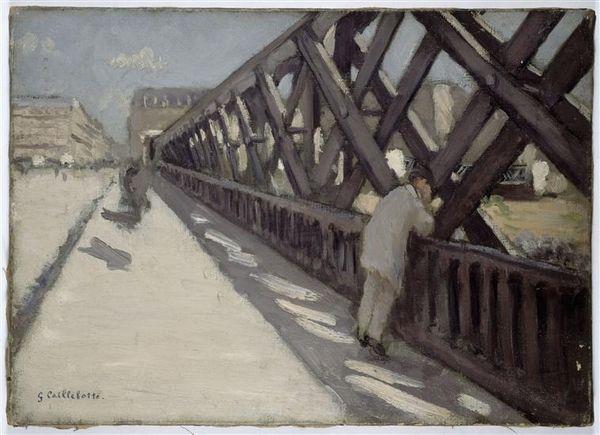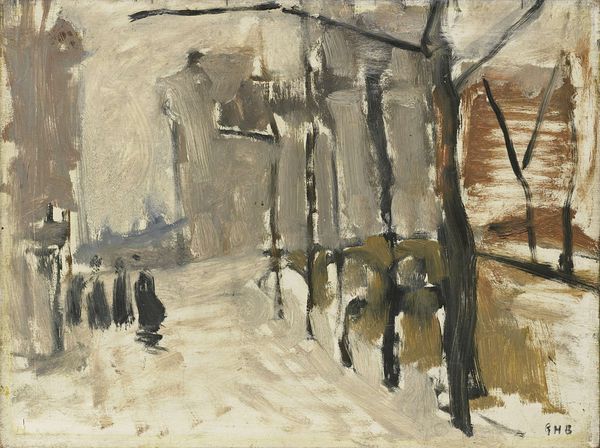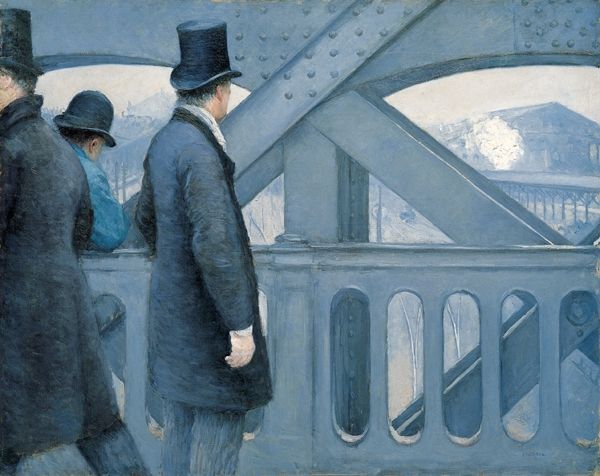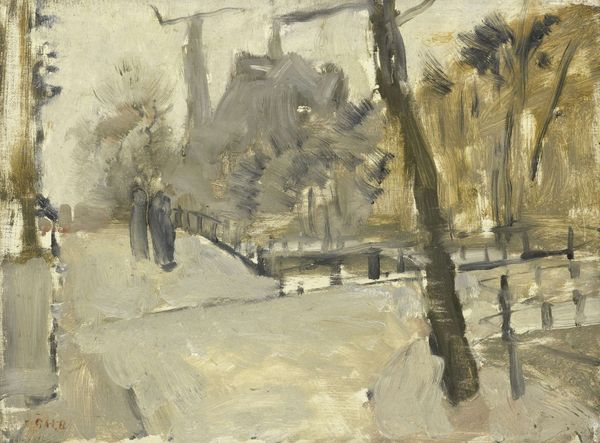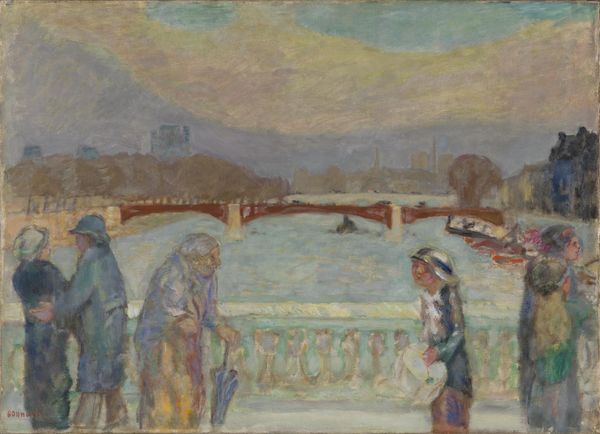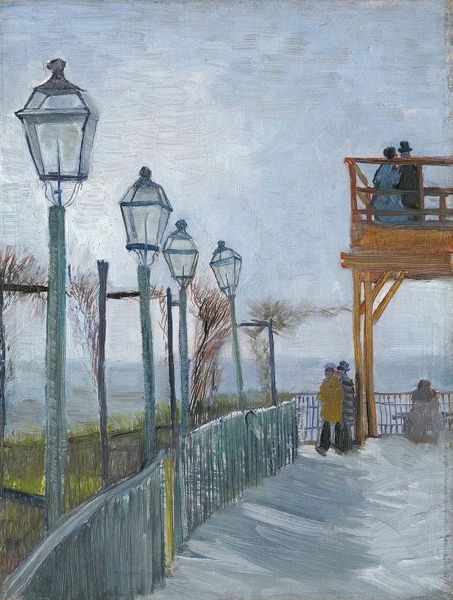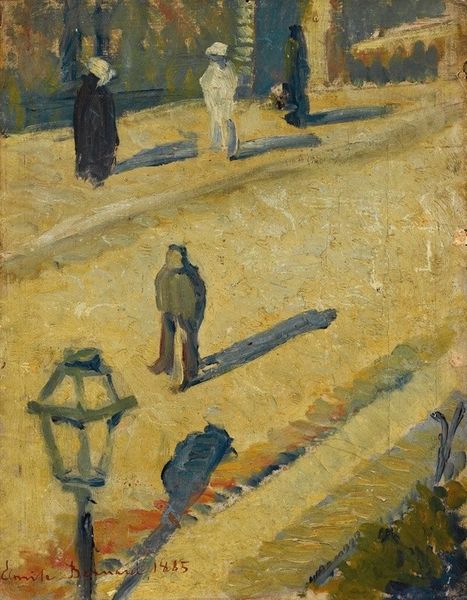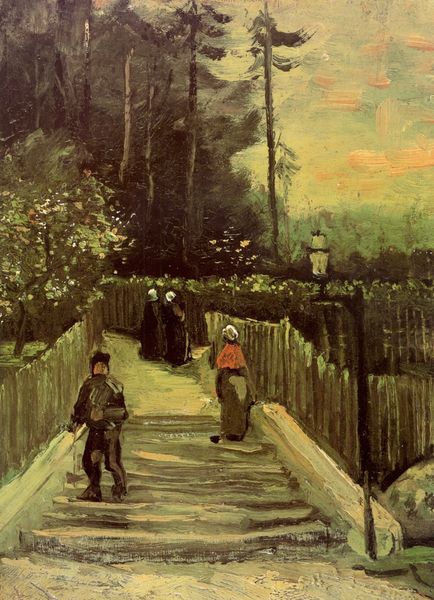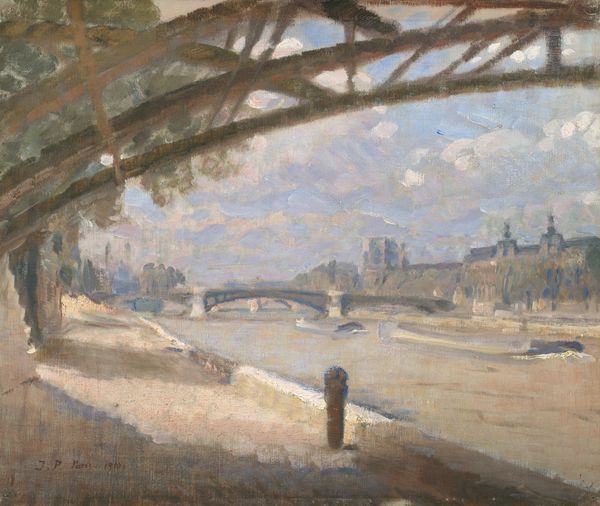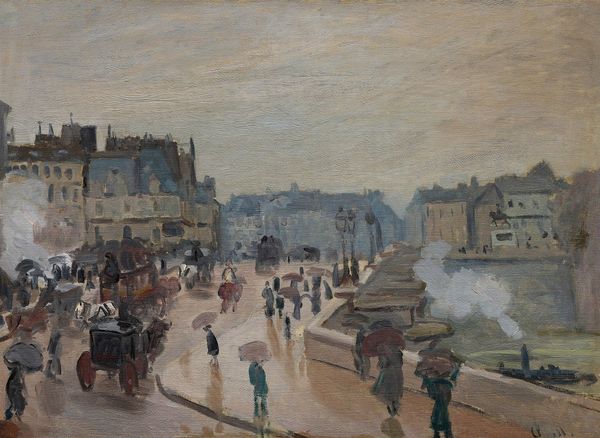
painting, plein-air, oil-paint
#
portrait
#
painting
#
impressionism
#
plein-air
#
oil-paint
#
oil painting
#
cityscape
#
genre-painting
#
realism
Dimensions: 83.1 x 122.5 cm
Copyright: Public domain
Editor: Here we have Gustave Caillebotte’s "Study for Le Pont De L'Europe," painted around 1876. It's an oil painting and gives such a snapshot impression of life on a Parisian bridge. I find the cool blues and grays quite evocative of a particular mood. How do you interpret this work? Curator: Caillebotte’s work is so interesting in the way it reflects the burgeoning industrial age of Paris. This bridge, the Pont de l'Europe, wasn’t just a crossing point, but a symbol of modernity, of engineering prowess. Notice how the iron girders almost cage the figures. Do you see how that might represent a commentary on industrialization and its impact on individual experience? Editor: That's a fascinating point. It feels almost claustrophobic despite being an open outdoor scene. Was Caillebotte deliberately critiquing progress? Curator: It’s hard to say definitively “critiquing.” His realism wasn’t straightforward. He’s showing us modern life – the top hats, the bourgeois couple, the figure lost in thought – but within this very structured, almost oppressive, architectural frame. What do you make of the man leaning on the railing? Editor: He seems isolated. Separate from the couple and the people behind him. Perhaps he represents the alienation that can come with urban life? Curator: Precisely! And Caillebotte, through his privileged position, observed this new social landscape with its inherent contradictions and painted it with a uniquely insightful perspective. Editor: It’s amazing how a seemingly simple street scene can hold such layers of meaning reflecting social anxieties and the spirit of the age. I'll never look at a bridge the same way! Curator: Indeed. And that's the power of art history; to help us decode those hidden narratives.
Comments
No comments
Be the first to comment and join the conversation on the ultimate creative platform.

